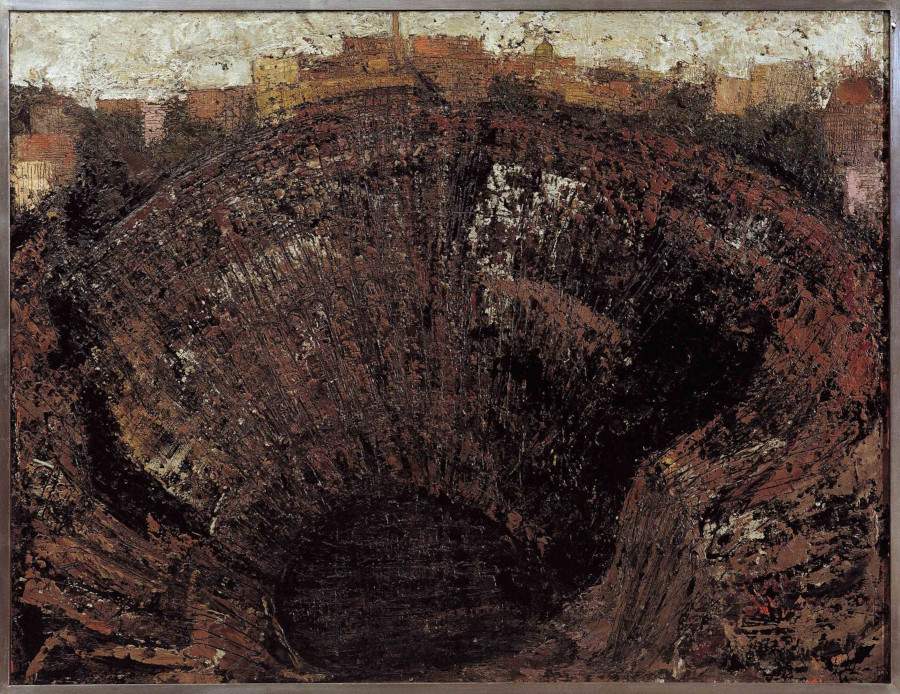The Fondazione Cassa di Risparmio di Jesi, under the patronage of the Marche Region, and with the collaboration of the Casa Testori cultural association, presents from December 12, 2021 to March 27, 2022 in the Palazzo Bisaccioni in Jesi the anthological exhibition of the American painter William Congdon (Providence, 1912 - Milan, 1998), a twentieth-century artist and child ofAction Painting who created paintings of great lyrical power, between the city and man-made nature. The works displayed in the exhibition entitled William Congdon. 33 Paintings from the William G.Congdon Foundation, were generously made available by the William G. Congdon Foundation, which protects the painter’s work, and selected by Davide Dall’Ombra, director of Casa Testori.
The exhibition presents more than thirty paintings, often of large dimensions, designed specifically for the Palazzo Bisaccioni venue: from the New York of the 1940s and the Venetias loved and collected by Peggy Guggenheim, to the metaphysical landing place of the Plowed Fields of the 1980s and 1990s. From Action painting, of which Congdon was an interpreter, through his early experiences of traveling to the cities of his choice. Thus it is that the imposing Rome of the vestiges of the Pantheon comes to terms with an existential representation of architecture, represented by the chasm of the Colosseum or the precariousness of the city of Assisi, landsliding on the hillside.
Recounting Congdon’s portraits of cities are the imposing panels of Istanbul, the Taj Mahal, the human-marked desert of Sahara and the chasm of Santorini.
In contrast to the torments and splendors of civilizations, Congdon traverses the metaphor of the animal that, like nature, must come to terms with the violence of man. It is thus that the cycle of the Bulls becomes a metaphor for the cruel quest, expressed in our traditions, as in the pursuit of our own desires. “Even a humiliated, wounded and doomed bull can be,” Congdon writes, “redeemed by the artist, who eternalizes its greatness and power through painting.” From painting as redemption to the ultimate human symbol of suffering and resurrection, namely the Crucifix, is a short step. However, the American artist’s approach is never aesthetic or theoretical, and his landing on the sacred subject comes only after his troubled conversion to Catholicism.
His move south to Milan focuses his point of view on an almost unique subject: cultivated fields. It is in the last two decades of his life that the quest, from spatial, becomes temporal and the protagonists become the power of the earth and its transformations. These are not idyllic visions: one turns one’s gaze to the fields and follows the human process operated on the surface. It is a torment, even a material one, that seems to find peace in the Mists and Monochromes, flowing into the musical lyricism of the vegetation that concludes the exhibition.
Thus, meditations on George Braque and Nicolas de Staël re-emerge, but in particular the pictorial dialogues with the New York School linked to Betty Parsons’ gallery, at the origin of the presence of Congdon’s works in the most important American museums and in the Peggy Guggenheim Collection in Venice.
Image: William Congdon, Rome - Colosseum 2 (1951)
 |
| Anthological exhibition of American William Congdon, heir to Action Painting, coming to Jesi. |
Warning: the translation into English of the original Italian article was created using automatic tools. We undertake to review all articles, but we do not guarantee the total absence of inaccuracies in the translation due to the program. You can find the original by clicking on the ITA button. If you find any mistake,please contact us.